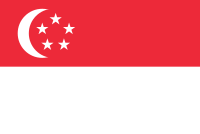A master sergeant is the military rank for a senior non-commissioned officer in the armed forces of some countries.

The Singapore Armed Forces (SAF) are the military services of the Republic of Singapore, responsible for protecting and defending the security interests and the sovereignty of the country. A military component of the Ministry of Defence (MINDEF), the armed forces have four service branches: the Army, the Navy, the Air Force, and the Digital and Intelligence Service. An integrated force, it is one of the most capable, robust, technologically sophisticated and powerful militaries in Southeast Asia and the surrounding regions. The SAF is headed by the chief of defence force, appointed by the president of Singapore, on the advice of the Cabinet.
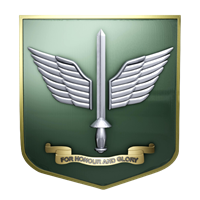
Commandos is the special forces formation of the Singapore Army responsible for conducting special operations. Commandos are tasked with infiltrating behind enemy lines by raiding and reconnaissance operations using airborne raids, helicopter assault and sea landings. The formation is made up of only one battalion, the 1st Commando Battalion, and is based in Hendon Camp.

Guards, also referred to as Guardsmen, is a rapid deployment elite infantry formation of the Singapore Army responsible for conducting air assault, expeditionary, and amphibious operations.

The SAF Military Police Command is the military police formation of the Singapore Armed Forces (SAF). Established as the Singapore Armed Forces Provost Unit (SAFPU) in 1966, its primary role is to police duties to uphold standards of discipline within the SAF, and to provide security coverage for key SAF military installations and the Ministry of Defence (MINDEF) headquarters at Bukit Gombak.
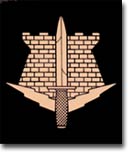
The Singapore Combat Engineers (SCE) is a formation of the Singapore Army. Combat Engineers provide mobility by bridging gaps and clearing minefields to facilitate speedy advance of troops into enemy territory, and counter-mobility by constructing obstacles such as anti-tank ditches to impede the enemy's movement. The Combat Engineers also construct trenches, drainage systems and other related infrastructure to enhance the survivability of troops during operations.

Ng Yat Chung is a Singaporean former lieutenant-general who served as Chief of Defence Force between 2003 and 2007.
The Singapore Armed Forces (SAF) has five rank schemes for active and reservist personnel, with a sixth for the auxiliaries of the SAF Volunteer Corps. The SAF has a unique rank structure as an integrated force, ranks are the same in the Singapore Army, the Republic of Singapore Navy (RSN), the Republic of Singapore Air Force (RSAF), and the Digital and Intelligence Service (DIS).
Singapore has had an history of armed conflict and personnel dating to the colonial period.
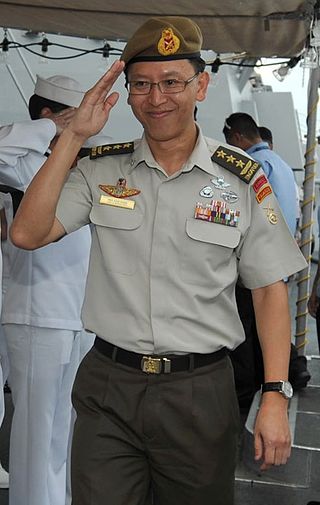
Neo Kian Hong is a Singaporean civil servant and former lieutenant-general who served as Chief of Defence Force between 2010 and 2013.
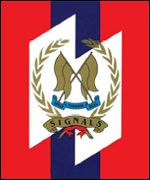
Signals is the formation of the Singapore Army responsible for communications on multiple platforms and local networking on the battlefield. It also supports the Singapore Armed Forces (SAF) by developing the capacity for network-centric warfare in the form of Integrated Knowledge-based Command and Control (IKC2) and Command, Control, Communications, Computers and Intelligence (C4I) operations.
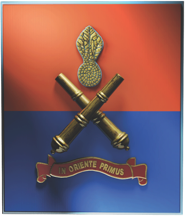
The Artillery is a formation of the Singapore Army, comprising four active battalions—the 21st, 22nd, 23rd and 24th Battalions—and an undisclosed number of reservist battalions. The primary role of the Artillery formation is to deliver timely, accurate and effective fire in support of the manoeuvre force to accomplish missions. As an indirect fire support system, the gunners rely on the forward observer and target acquisition elements to provide the target's location, which is then passed to the command post to direct the gunners to fire.

Perry Lim Cheng Yeow is a Singaporean former lieutenant-general who served as Chief of Defence Force between 2015 and 2018.
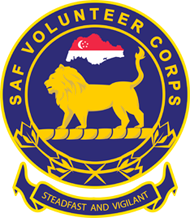
The Singapore Armed Forces Volunteer Corps (SAFVC) is a uniformed volunteer auxiliary branch of the Singapore Armed Forces. It was established on 13 October 2014 to allow Singaporean women, first generation permanent residents and naturalised citizens, all of whom would otherwise not be subject to an obligation to serve national service, to contribute their part towards Singapore's defence. It also aims to strengthen support for national service by understanding the duties of national servicemen.

Melvyn Ong Su Kiat is a Singaporean retired lieutenant-general who served as Chief of Defence Force between 2018 and 2023.
The SAF Day Parade is an annual military parade and ceremony of the Singapore Armed Forces (SAF) held on 1 July in commemoration of the founding of the SAF. It is the second military parade in seniority to be held in Singapore next to the Singapore National Day Parade on 9 August. It is usually held at the SAFTI Military Institute in Jurong West, with the presence of the president of Singapore. Salutes are also taken by the prime minister of Singapore, and the chief of Defence Force.
David Neo Chin Wee is a Singaporean major-general who has been serving as Chief of Army since 2022. Prior to his appointment as Chief of Army, he was serving as Deputy Secretary (Technology) at the Ministry of Defence. Neo is the first Commando to serve as Chief of Army.
Maintenance and Engineering Support is the formation of the Singapore Army responsible for military engineering maintenance. It provides maintenance and engineering support to the Army by ensuring high operational equipment readiness for the Army and the Singapore Armed Forces (SAF) at sustainable budget and manpower resources. It also train technicians and operator-maintainers (OMers) to perform field repairs in military exercises and training.
The Ammunition Command is the formation of the Singapore Army responsible for providing the Singapore Armed Forces (SAF) with ammunition, explosives supply chain management and technical support for ammunition. Besides taking charge of the maintenance and storage of ammunition and explosives, they provide support for the fireworks display at national events such as the National Day Parade and Southeast Asian Games.


